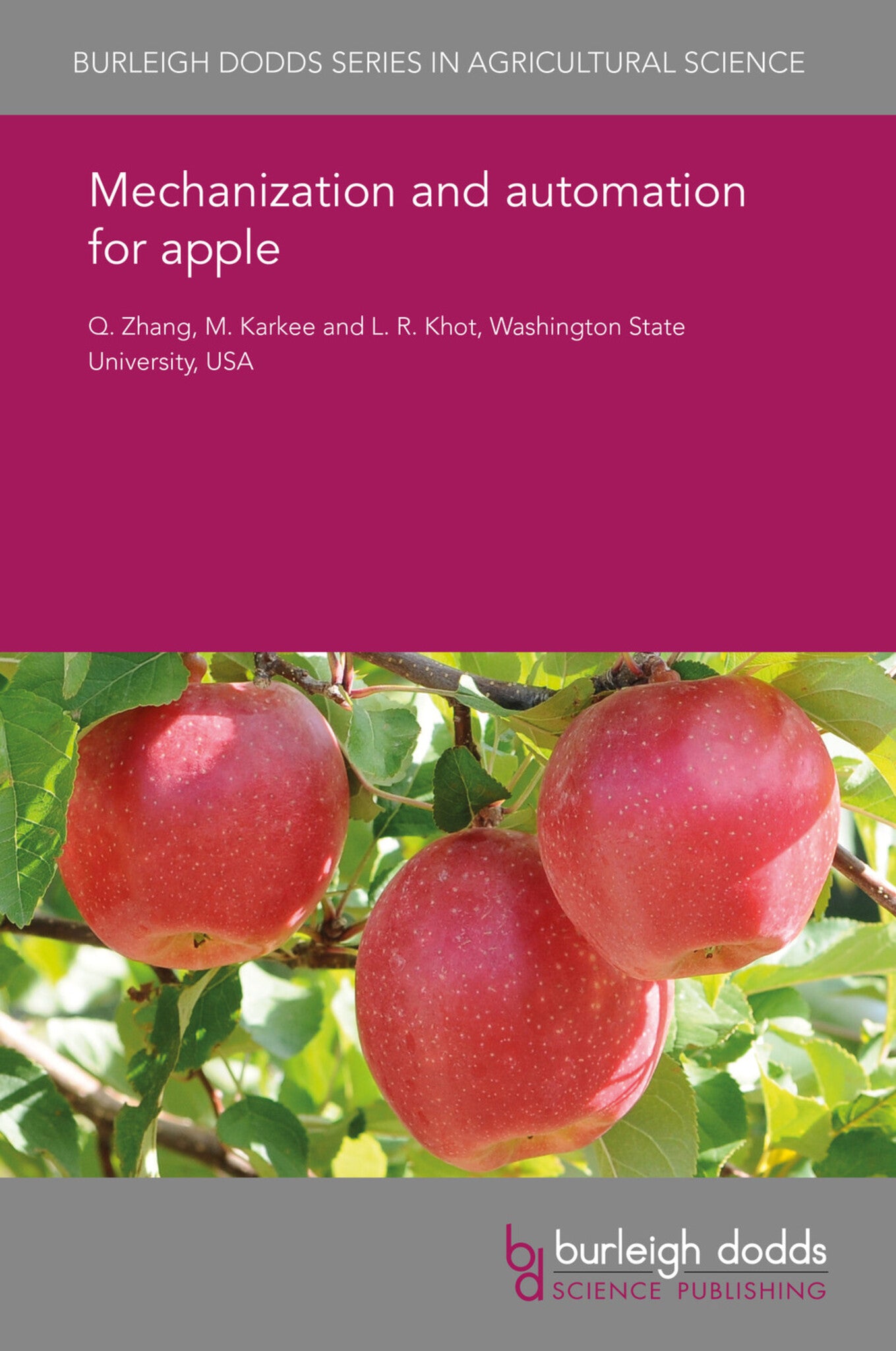We're sorry. An error has occurred
Please cancel or retry.
Mechanization and automation for apple
Regular price
£25.00
Sale price
£25.00
Regular price
£25.00
Unit price
/
per
Sale
Sold out
Re-stocking soon
Sustaining large-scale commercial apple production depends on the availability of a large, seasonal and suitably skilled workforce. The costs and associated risks are dependent on human labor as we...
Read More

Some error occured while loading the Quick View. Please close the Quick View and try reloading the page.
Couldn't load pickup availability
- Format:
-
18 May 2017

Sustaining large-scale commercial apple production depends on the availability of a large, seasonal and suitably skilled workforce. The costs and associated risks are dependent on human labor as well as overall productivity which could be reduced by improved mechanization of apple production operations. This chapter begins by reviewing the levels of mechanization that may be introduced into apple production and then considers a variety of mechanization solutions for each of the four key operations in apple production: training and pruning, thinning, pest and disease control, and harvesting. In each case, the chapter first considers those solutions which employ lower levels of mechanization, and then moves up to solutions which involve a higher level of mechanization, including automation and robotics. The advantages and disadvantages of each solution, and directions for further development are also discussed.

Price: £25.00
Publisher: Burleigh Dodds Science Publishing
Imprint: Burleigh Dodds Science Publishing
Series: Burleigh Dodds Series in Agricultural Science
Publication Date:
18 May 2017
ISBN: 9781838790097
Format: eBook
BISACs:
TECHNOLOGY & ENGINEERING / Agriculture / Sustainable Agriculture, Commercial horticulture, SCIENCE / Life Sciences / Horticulture, TECHNOLOGY & ENGINEERING / Agriculture / Agronomy / Crop Science, Botany and plant sciences, Sustainable agriculture, Agronomy and crop production

1 Introduction 2 Levels of mechanization 3 Training and pruning 4 Thinning 5 Pest and disease control 6 Technologically-assisted apple harvesting 7 Robotic apple harvesting 8 Future trends and conclusion 9 Where to look for further information 10 References



